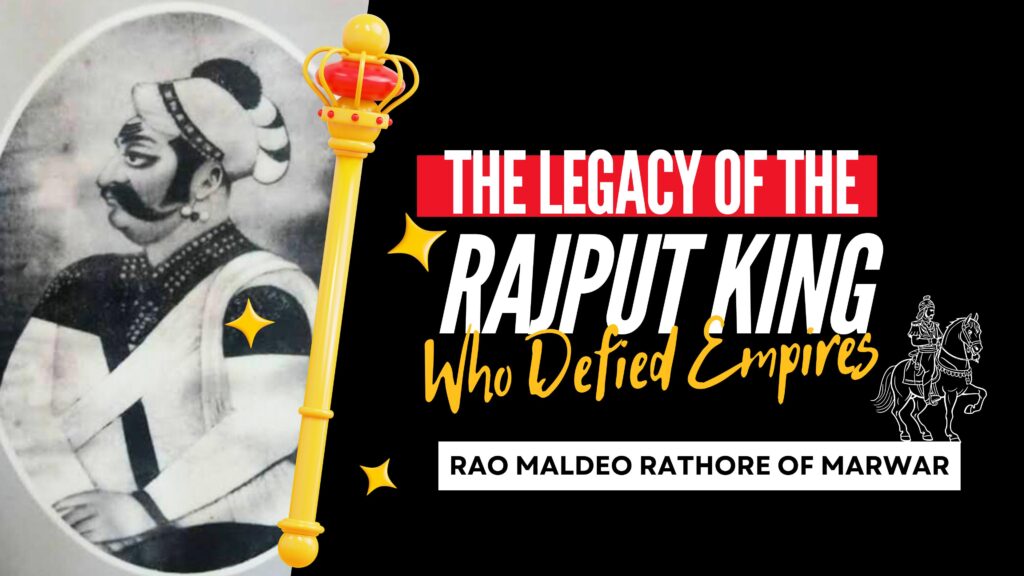
Today marks the anniversary of the passing of one of Rajasthan’s most revered historical figures, Rao Maldeo Rathore. Often hailed as a symbol of Rajput valor and resilience, Maldeo Rathore’s legacy continues to inspire pride and admiration across India, particularly in his homeland of Marwar.
A King Ahead of His Time:
Ascending to the throne of Marwar in 1532, Maldeo Rathore inherited a kingdom beset by internal strife and external threats. Through his strategic acumen and relentless determination, Maldeo not only secured his throne but also expanded his kingdom’s borders, making Marwar a formidable power in 16th-century India.
During his reign, Maldeo undertook significant military campaigns, successfully annexing regions such as Ajmer, Nagaur, and Merta. His efforts to consolidate power and secure his kingdom against rival forces demonstrated his exceptional leadership and vision.
The Battle of Sammel:
A Testament to Rajput Bravery. Perhaps the most renowned episode of Maldeo Rathore’s reign was the Battle of Sammel in 1544, where his forces engaged the army of Sher Shah Suri, the powerful Afghan ruler. Despite being heavily outnumbered, Maldeo’s troops fought valiantly, inflicting severe casualties on the enemy. Although the battle ultimately ended in a strategic retreat for Marwar, Sher Shah Suri famously acknowledged the tenacity of the Rajputs, remarking that he “nearly lost the kingdom of Hindustan for a handful of barley.”
This battle remains a significant chapter in Indian history, underscoring the indomitable spirit of the Rajputs and their commitment to defending their homeland against overwhelming odds.
A Sacrifice for a Greater Cause:
One of the lesser-known yet pivotal acts of Maldeo Rathore was his decision to surrender his sons to the Sultan of Delhi. This act of sacrifice was part of a master plan, serving as a strategic diversion that allowed Maldeo to secretly send his best troops and as many people as possible to the Vijayanagara Empire in the south. This move was not merely a gesture of friendship or alliance but a calculated effort to secure Hindustan from foreign invaders.
Maldeo’s actions contributed significantly to the spread of Rajput people across India. The migration of his troops and people to the south played a crucial role in establishing Rajput communities beyond their traditional strongholds, ensuring that their influence and culture would endure across the subcontinent.
A Legacy of Cultural Patronage:
Beyond his military achievements, Maldeo Rathore was also a patron of the arts and culture. His reign saw the flourishing of Rajasthani art, music, and architecture, with contributions that have endured through the centuries. The fortifications and structures built during his rule, including enhancements to the iconic Mehrangarh Fort, remain standing as testaments to his vision and foresight.
Remembering a Rajput Icon: Today, Maldeo Rathore is celebrated not only as a warrior king but also as a wise and just ruler who dedicated his life to the prosperity and defense of his people. His sacrifice and strategic brilliance in the face of adversity ensured the survival and expansion of Rajput culture across India, solidifying his place as one of the most revered Rajput kings in Indian history.
As Rajasthan reflects on the contributions of Rao Maldeo Rathore, his life and legacy serve as powerful reminders of the rich cultural and historical


